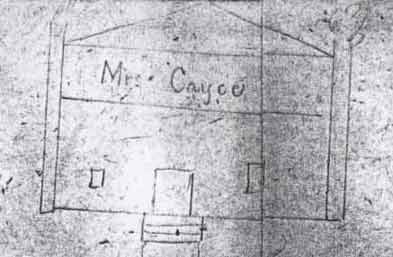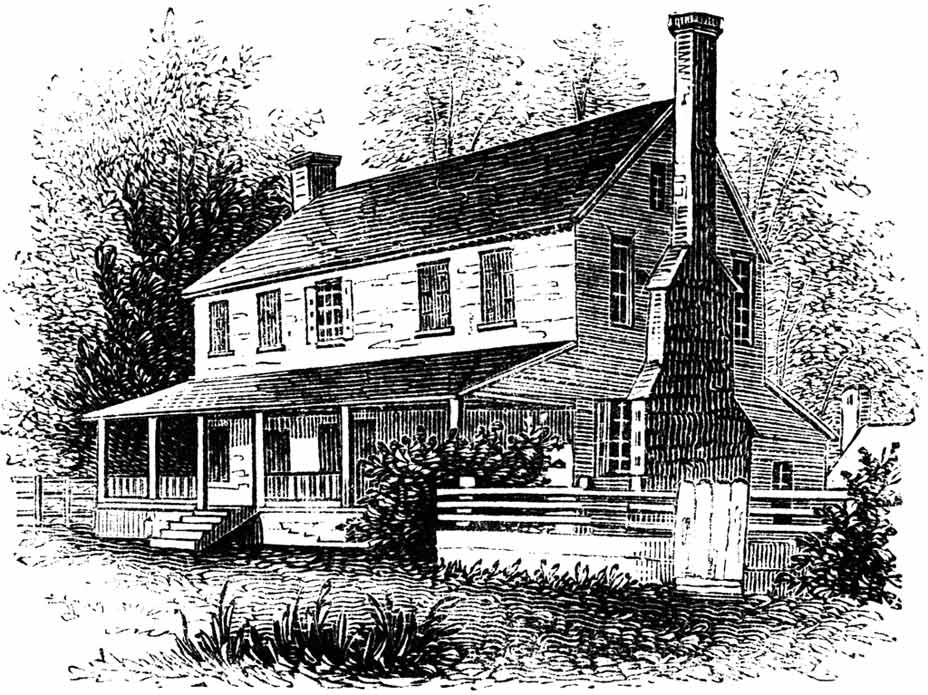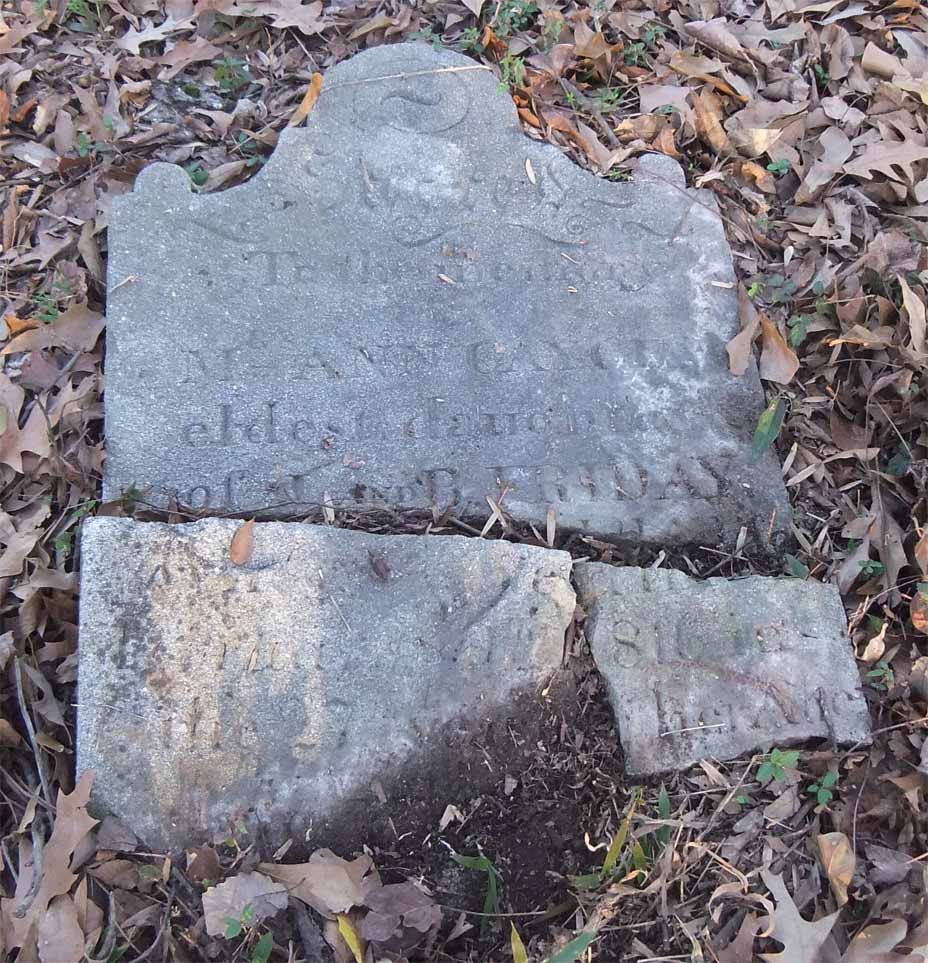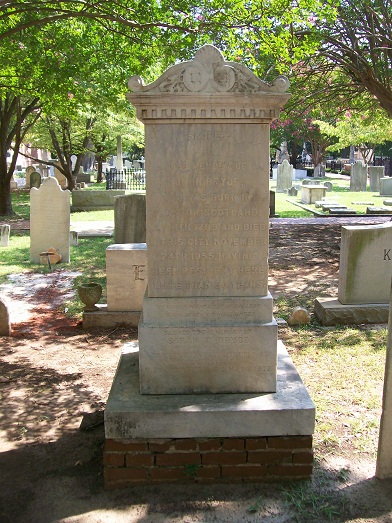Sarah Friday's 1810 Granby Drawing
Cayce House


There is little argument that the Chesnut and Kershaw Company built, about 1766, a store at Granby and it would later be know as "The Cayce House". The role of this store as a British Fort in the Revolution is well documented but there are several versions of what happened to the house after the war. The William Capers Chapter of the D. A. R, gives us the following Revolutionary War history of the building:
Soon after the fall of Charles Town, May 12, 1780, the British forces in South Carolina established military posts in various parts of the state and began a vigorous campaign for the complete conquest of the State. One of these posts was established at "the Congarees", as that section of the state around about Friday's Ferry on Congaree river had been known ever since the Congaree Indians had vacated the lands there in the early days of the 18th century. At first these lands were referred to as "the Congaree's lands" and gradually the apostrophe and the word land were dropped in writing the name of the section.
The village of Granby was located in "the Congarees" and nearby was a large country store conducted by Chesnut and Kershaw. The British seized this store building, threw up earthworks and dug trenches about it, built a powder magazine and otherwise equipped it as one of their fortified posts. This was officially styled by them "the post at the Congarees". February 19, 1781, General Sumter appeared before this post and laid siege thereto. On the 21st, Lord Rawdon's army appeared on the opposite bank of the Congaree, having marched from Camden to the relief of the post; in the face of these superior numbers General Sumter had to abandon the siege, but not before he had blown up the magazine and destroyed a quantity of provisions in, sight of Rawdon's army.
On the 15th day of May, the post was surrendered to Lieut. Col. Henry Lee, commanding a 1egion of Americans. He reached the post before dawn and began to erect a battery in the edge of the woods to the west thereof. The morning was foggy, which enab1ed the Americans to finish their battery before it was discovered by the British. A six pounder was mounted in the battery and, as soon as the fog dispersed, fire was opened on the British works. The garrison consisted of 19 officers and 329 men, commanded by Major Maxell of the Prince of Wales' regiment. As the piece of artillery opened fire, the infantry advanced end took possession of desirable ground without opposition, cutting off a part of the British pickets. Just then Colonel Lee called upon Maxwel1 to surrender which he did after some parleying.
July 1, 1781, General Greene, on his way from Winnsborough to overtake Rawdon, reoccupied the post. It was never reoccupied by the British.
Eventually, the building's Revolutionary War history would move from using the name "post at the Congarees" to "Fort Granby". The possession of the building after the war also becomes blurred in historical descriptions, especially in the 20th century. For the purpose of our Granby research, we are going along with the more simplified ownership theory which was given credence in 1848 by James Cayce himself.
Benton J. Lossing interviewed James Cayce in 1848 for his "Pictorial Fieldbook of the Revolution". Cayce described a Mr. Friday as the building's storekeeper during the Revolutionary War and stated that Mr. Friday was his father-in-law. The Fridig/Friday family tree paternal line is:
Martin Fridig - 1689-1758
John Jacob Fridig - 1719-1779
John Jacob Fridig Jr. - 1743-1822
Our Sarah Friday was the daughter of John Jacob Fridig Jr. Based on the birth and death dates, the Mr. Friday that James Cayce mentions must be Sarah's father. Sarah's older sister (Ann 1789-1816) married James Cayce but died before the death of Sarah's parents. Ann may have been living in the house at the time of her death and Sarah allowed the house to stay in the possession of her sister's husband (James Cayce) and their children after the death of her sister in 1816 and then her father in 1821. Sarah's drawing shows Frideig's Entertainments (at that time, owned by her father) next door to "The Cayce House" which also seems to confirm a relationship between the house and the Firday's.
Below: The grave of Ann Friday Cayce in the Granby Cemetery

Below: The grave of Sarah Friday Bryce in Columbia's First Presbyterian Church Cemetery

In summary, the house was built by Chesnut and Kershaw who let it go back to the originally land owner (the Fridig's) during the Revolution. It stayed in the Friday family until James Cayce married Ann Friday (Sarah's older sister) and moved into the house. When Ann died in 1814, the house remained with James Cayce and Ann's children and would, from that point on, be known as "The Cayce House".
A newspaper story from 1935 states that, due to neglect, the house is beyond repair and will soon collapse. Under the ownership of the quarry, and with attention focused on the Great Depression and WWII, there would be little interest and resources available to save the building. Today, the Cayce House is long-gone. the quarry has expanded it's hole and completely destroyed the site. About 80% of the Granby shown in Sarah's drawing is now in the quarry hole or under quarry slag piles. Only the southern most portion of the town can be walked on today and that is in the Riverland Park neighborhood where we are doing the archaeology work.
Today's Cayce Museum is a replica of the old trading post (Cayce House). You can go there and learn much more about what may be the most historic three miles in South Carolina and maybe the United States.
Mr. Cayce (Fort Granby) site: Status: Destroyed by quarry hole. Archaeology is not possible at this location on the quarry property (Click here to see this location on a map)